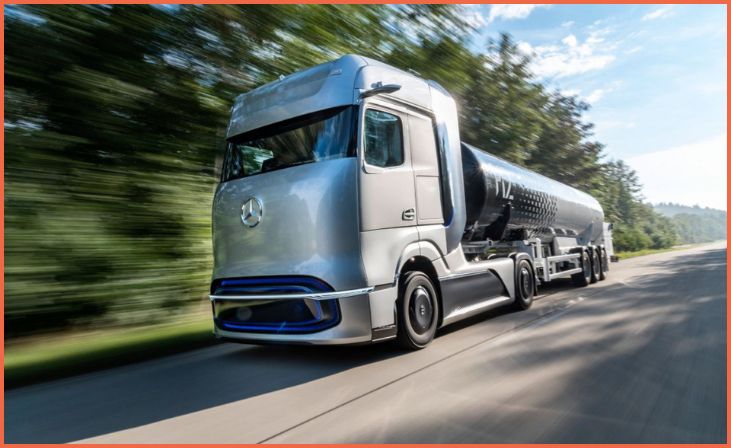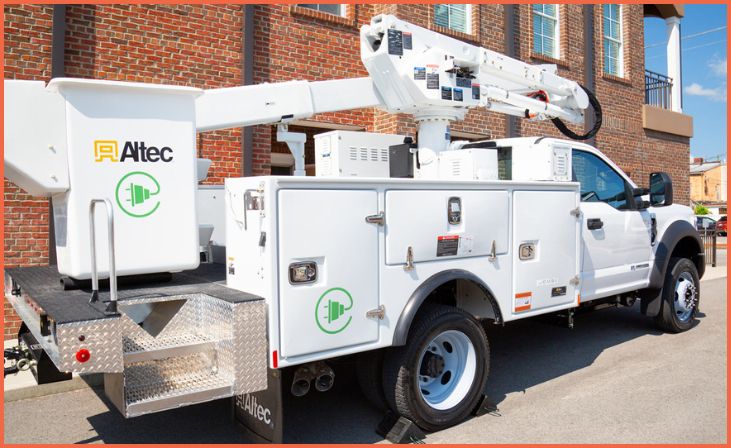The trucking industry is undergoing a significant shift towards eco-friendly practices, driven by the need to reduce carbon emissions and minimize environmental impact. As the world increasingly emphasizes sustainability, the trucking sector is exploring innovative strategies and technologies to pave the way for sustainable transport. This blog post delves into nine essential strategies for eco-friendly trucking that industry professionals should be aware of.
From embracing low emission vehicles and investing in fuel-efficient technologies to reducing idling time and adopting green driving habits, these strategies are crucial for minimizing the environmental footprint of the trucking industry. The post highlights the importance of eco-friendly trucking in the context of global sustainability efforts and provides valuable insights for industry professionals seeking to align with environmentally conscious practices.
Best Tactics for Eco-Friendly Trucking
“Strategies for Eco-Friendly Trucking” outlines proactive approaches to minimize carbon emissions and environmental impact in the trucking industry. From adopting alternative fuels and aerodynamic designs to optimizing routing and prioritizing driver training, these strategies aim to enhance sustainability while maintaining operational efficiency. By embracing sustainable practices, trucking companies can reduce their ecological footprint and contribute to a cleaner, greener future for transportation.
1. Utilize Alternative Fuels and Energy Sources

Transitioning to alternative fuels like biodiesel, natural gas, or electricity can significantly reduce carbon emissions in trucking operations. Biofuels derived from renewable sources offer a cleaner burning alternative to traditional diesel, while electric trucks powered by renewable energy sources further minimize environmental impact. By investing in infrastructure for refueling or recharging stations and collaborating with energy providers, trucking companies can seamlessly integrate alternative fuels into their fleets. Additionally, government incentives and subsidies may be available to offset initial investment costs and encourage the adoption of eco-friendly energy solutions. Embracing alternative fuels not only reduces greenhouse gas emissions but also helps diversify the energy mix, enhancing energy security and resilience in the transportation sector.
2. Implement Aerodynamic Designs and Technologies
Streamlining truck design with aerodynamic enhancements such as side skirts, trailer tails, and aerodynamic fairings reduces drag and improves fuel efficiency. Advanced technologies like adaptive cruise control and automatic tire inflation systems also contribute to lowering fuel consumption and emissions. By investing in research and development, truck manufacturers can continue to innovate aerodynamic solutions that optimize vehicle performance and sustainability. Moreover, regulatory agencies may incentivize the adoption of aerodynamic technologies through fuel efficiency standards or tax incentives, further driving industry-wide adoption. Embracing aerodynamic designs not only benefits the environment but also enhances the competitiveness and efficiency of trucking operations in the market.
3. Optimize Routing and Logistics
Efficient route planning and optimization software can minimize empty miles, reduce fuel consumption, and decrease overall environmental footprint. By leveraging advanced algorithms and real-time data analysis, trucking companies can identify the most efficient routes, taking into account factors such as traffic patterns, weather conditions, and delivery schedules. Implementing dynamic routing solutions enables flexibility to adapt to changing circumstances, further enhancing efficiency and sustainability.
Additionally, collaborating with other stakeholders in the supply chain, such as shippers and receivers, can facilitate coordination and consolidation of shipments, reducing the number of trips and optimizing resource utilization. Through continuous monitoring and optimization of routing and logistics operations, trucking companies can achieve significant reductions in greenhouse gas emissions and operational costs while improving overall service quality and reliability.
4. Invest in Fuel-Efficient Vehicles and Equipment
Upgrading to fuel-efficient trucks equipped with advanced engine technologies and emissions control systems can yield significant environmental benefits. Investing in newer, cleaner-burning vehicles and retrofitting older trucks with emissions-reducing technologies improves overall fleet efficiency and sustainability. Additionally, adopting lightweight materials and optimizing vehicle design further enhances fuel economy and reduces emissions. By collaborating with truck manufacturers and technology suppliers, trucking companies can stay at the forefront of innovation and incorporate the latest fuel-efficient technologies into their fleets. While upfront investment costs may be higher, the long-term savings in fuel expenses and environmental impact make it a sound strategic decision. Moreover, government incentives and regulations may further incentivize the adoption of fuel-efficient vehicles, aligning with broader sustainability goals and regulations.
Read More: 10 Creative Truck Customization Ideas in 2024
5. Embrace Idle Reduction Practices
Idling trucks consume fuel and emit pollutants unnecessarily. Implementing idle reduction technologies such as automatic engine shutdown systems, auxiliary power units (APUs), and electrified parking spaces can minimize idling time and reduce emissions. By encouraging drivers to turn off engines during extended stops and providing incentives for adopting idle reduction practices, trucking companies can significantly reduce fuel consumption and emissions.
Additionally, leveraging telematics and fleet management systems enables real-time monitoring of idle times and performance, allowing for proactive interventions and optimization. Furthermore, educating drivers on the environmental and economic benefits of idle reduction fosters a culture of sustainability and responsibility within the organization. Through a combination of technological solutions, driver training, and organizational policies, trucking companies can effectively reduce idle time, lower operating costs, and minimize their environmental footprint.
3. Optimize Routing and Logistics
Efficient route planning and optimization software can minimize empty miles, reduce fuel consumption, and decrease overall environmental footprint. By leveraging advanced algorithms and real-time data analysis, trucking companies can identify the most efficient routes, taking into account factors such as traffic patterns, weather conditions, and delivery schedules. Implementing dynamic routing solutions enables flexibility to adapt to changing circumstances, further enhancing efficiency and sustainability.
Additionally, collaborating with other stakeholders in the supply chain, such as shippers and receivers, can facilitate coordination and consolidation of shipments, reducing the number of trips and optimizing resource utilization. Through continuous monitoring and optimization of routing and logistics operations, trucking companies can achieve significant reductions in greenhouse gas emissions and operational costs while improving overall service quality and reliability.
4. Invest in Fuel-Efficient Vehicles and Equipment
Upgrading to fuel-efficient trucks equipped with advanced engine technologies and emissions control systems can yield significant environmental benefits. Investing in newer, cleaner-burning vehicles and retrofitting older trucks with emissions-reducing technologies improves overall fleet efficiency and sustainability. Additionally, adopting lightweight materials and optimizing vehicle design further enhances fuel economy and reduces emissions. By collaborating with truck manufacturers and technology suppliers, trucking companies can stay at the forefront of innovation and incorporate the latest fuel-efficient technologies into their fleets. While upfront investment costs may be higher, the long-term savings in fuel expenses and environmental impact make it a sound strategic decision. Moreover, government incentives and regulations may further incentivize the adoption of fuel-efficient vehicles, aligning with broader sustainability goals and regulations.
5. Embrace Idle Reduction Practices

Idling trucks consume fuel and emit pollutants unnecessarily. Implementing idle reduction technologies such as automatic engine shutdown systems, auxiliary power units (APUs), and electrified parking spaces can minimize idling time and reduce emissions. By encouraging drivers to turn off engines during extended stops and providing incentives for adopting idle reduction practices, trucking companies can significantly reduce fuel consumption and emissions. Additionally, leveraging telematics and fleet management systems enables real-time monitoring of idle times and performance, allowing for proactive interventions and optimization.
Furthermore, educating drivers on the environmental and economic benefits of idle reduction fosters a culture of sustainability and responsibility within the organization. Through a combination of technological solutions, driver training, and organizational policies, trucking companies can effectively reduce idle time, lower operating costs, and minimize their environmental footprint.
6. Prioritize Driver Training and Eco-Driving Practices
Educating drivers on eco-driving techniques such as maintaining steady speeds, avoiding rapid acceleration and braking, and reducing unnecessary idling can lead to substantial fuel savings and emissions reductions. Incentivizing and rewarding eco-friendly driving behavior further encourages sustainable practices. Providing comprehensive training programs that focus on fuel-efficient driving techniques and environmental awareness empowers drivers to play an active role in reducing the carbon footprint of trucking operations.
Moreover, integrating eco-driving metrics into performance evaluations and providing feedback to drivers fosters continuous improvement and accountability. By fostering a culture of eco-consciousness and providing the necessary support and incentives, trucking companies can leverage their drivers as key allies in their sustainability efforts, ultimately achieving significant reductions in fuel consumption and emissions while enhancing overall operational efficiency and competitiveness.
7. Maintain Vehicles for Optimal Performance

Regular maintenance and timely repairs are crucial for ensuring trucks operate at peak efficiency. Properly inflated tires, clean air filters, and well-maintained engines contribute to better fuel economy and reduced emissions, prolonging the lifespan of vehicles while minimizing environmental impact. Implementing preventive maintenance schedules and conducting routine inspections help identify and address issues before they escalate, avoiding costly breakdowns and unplanned downtime. Additionally, investing in fleet management software allows for proactive monitoring of vehicle health and performance, enabling predictive maintenance and optimization. By prioritizing vehicle maintenance and allocating resources effectively, trucking companies can maximize fuel efficiency, minimize emissions, and ensure the reliability and safety of their fleets, ultimately enhancing sustainability and profitability in the long run.
8. Explore Intermodal and Multimodal Transportation Solutions
Leveraging intermodal transportation options, such as rail or sea shipping for long-distance hauls, can offer significant environmental advantages over traditional trucking. Collaborating with other transportation modes and logistics partners to create seamless multimodal solutions further enhances efficiency and sustainability. By strategically integrating different modes of transportation based on factors such as distance, urgency, and cargo type, trucking companies can optimize supply chain operations while minimizing carbon emissions and transportation costs. Moreover, investing in intermodal infrastructure and partnerships strengthens resilience and flexibility in the face of disruptions and market fluctuations. Embracing intermodal and multimodal transportation not only reduces the environmental impact of trucking but also enhances overall supply chain efficiency and competitiveness in a rapidly evolving global marketplace.
9. Adopt Sustainable Supply Chain Practices
Collaborating with suppliers and customers to implement sustainable supply chain practices, such as reducing packaging waste, optimizing warehouse operations, and prioritizing eco-friendly materials, can help minimize the overall environmental impact of trucking operations. Embracing sustainability throughout the supply chain fosters a culture of environmental responsibility and resilience in the industry. By leveraging technology and data analytics, trucking companies can identify opportunities for waste reduction, energy efficiency improvements, and carbon footprint reductions across the entire supply chain.
Additionally, engaging stakeholders through transparent communication and partnerships fosters trust and collaboration, driving collective action towards a more sustainable future. By adopting sustainable supply chain practices, trucking companies not only mitigate environmental risks but also enhance brand reputation, customer loyalty, and long-term business sustainability.
Conclusion
In conclusion, the adoption of eco-friendly strategies in the trucking industry is vital for promoting sustainable transport and reducing environmental impact. By embracing low emission vehicles, investing in fuel-efficient technologies, and minimizing idling time, trucking companies can significantly reduce their carbon footprint and contribute to global sustainability efforts. Additionally, the implementation of green driving habits and regular maintenance on trucks play a pivotal role in making the industry more environmentally sustainable. As the world moves towards a greener, more sustainable future, it is imperative for the trucking industry to prioritize eco-friendly practices and technologies to minimize its environmental impact and pave the way for a more sustainable transport sector.
FAQs
How can truck drivers practice eco-friendly driving habits?
Truck drivers can practice eco-friendly driving habits by minimizing idling time, adopting efficient route planning, and embracing technologies that promote fuel-efficient driving.
What are some key technologies for eco-friendly trucking?
Technologies such as low emission vehicles, fuel-efficient technologies, and predictive traffic apps for efficient route planning are crucial for eco-friendly trucking practices.
How does regular maintenance on trucks contribute to eco-friendly trucking?
Regular maintenance on trucks reduces carbon emissions and improves fuel efficiency, making the trucking industry more environmentally sustainable.
Why is eco-friendly trucking important in the context of global sustainability efforts?
Eco-friendly trucking is important for reducing the environmental impact of the trucking industry, minimizing carbon emissions, and contributing to global sustainability initiatives.




